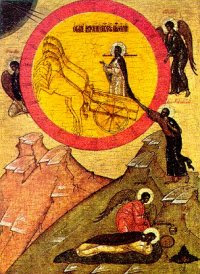Elvis Presley’s pink Cadillac (with a black roof, please note) is up for auction for up to three million dollars. A BBC TV presenter told us it is a 1957 model. But is it THE pink Cadillac? Well, yes, it is, according to the Daily Mail. And it comes with authentification, etc. But I hope the buyer will know exactly what he’s buying....
Elvis owned not one, not two, but three pink Cadillacs at various times. Elvis’s original genuine pink 1954 Cadillac Fleetwood, which he bought in early 1955, “burned up on the road” in the summer of that year. (Colour of roof unknown). He even sang about having a pink Cadillac in 'Baby Let's Play House' when he recorded it at Sun Studio earlier that year. Elvis then immediately bought a blue 1955 Cadillac Fleetwood (which had a black roof) as a replacement, and had it resprayed in a customised ‘Elvis Rose’ pink (keeping the black roof). Two months later, the car was in a collision with another vehicle, suffering minor damage, and in early 1956 Elvis had the paintwork retouched (and the roof resprayed white). in Between 1956 and 1960, he bought other cars, and perhaps one of these was the 1957 pink soon to be auctioned. In 1960, Elvis bought a white Cadillac Coupe de Ville (which had a pink roof). Was this one also resprayed pink? No idea. Thereafter he bought many cars (Cadillacs, Lincolns, Stutzes, Rolls Royces, etc.).
Some time after Elvis died, in 1977, Elvis’s ‘original pink Cadillac’ (restored and looking new) was put on display at Graceland, and it’s still there - although it has been sent on exhibition tours to other countries at various times. But which one is it? The first photo below, seen on display somewhere, is one of them, anyway. Probably either the first or the second of the pink Cadillacs. And this is not the 1957 model whose copyrighted photos can be seen in the Daily Mail.
To add to the confusion, an unspecified number of 1950s Cadillac Fleetwoods over the intervening years have been restored and sprayed pink (with pink, white or black sprayed roofs), and sold as ‘Elvis pink Cadillacs’. Phenomenal!
Remember - how could we forget? - forty years after his death, ‘Elvis’ continues relentlessly to grow. More and more merchandise is marketed. Elvis’s denigrated manager, ‘Colonel’ Tom Parker, who fleeced Elvis of millions of dollars of his earnings (and eventually gambled it all away) while marketing his ‘boy’ with numerous cheap items, had nothing on the present day ‘industry’. Top of the field is Elvis Presley Enterprizes, although, to their credit, they have preserved Elvis's mansion and estate (Graceland, etc., including the family graves) as one of America's popular tourist attractions.
Meanwhile, right now at London’s O2 arena, another Elvis exhibition has opened. This one, much smaller than the previous one, and sharing the space with a Prince exhibition, is essentially just a display of many of Elvis’s concert dress items (jumpsuits, shoes, etc.). Reportedly (from someone who really knows), the clothes are not displayed in the manner in which Elvis wore them, nor are there any accompanying photos to prove their authenticity, despite many being available from various sources. Admission price: £25. Car park price: £30. Astonishing commercialism! And our local newspaper, the Kent Messenger, currently has a two-page illustrated spread. And the event is not in Kent. Here’s one 1950s/1960s fan and admirer who will NOT be going.
Back in the 1950s, when Elvis was the real singing, trend-setting Elvis, performing and recording, generating real news, he was largely shunned by the British news and broadcasting media.
The King is long dead. Long live his music, his real legacy.












